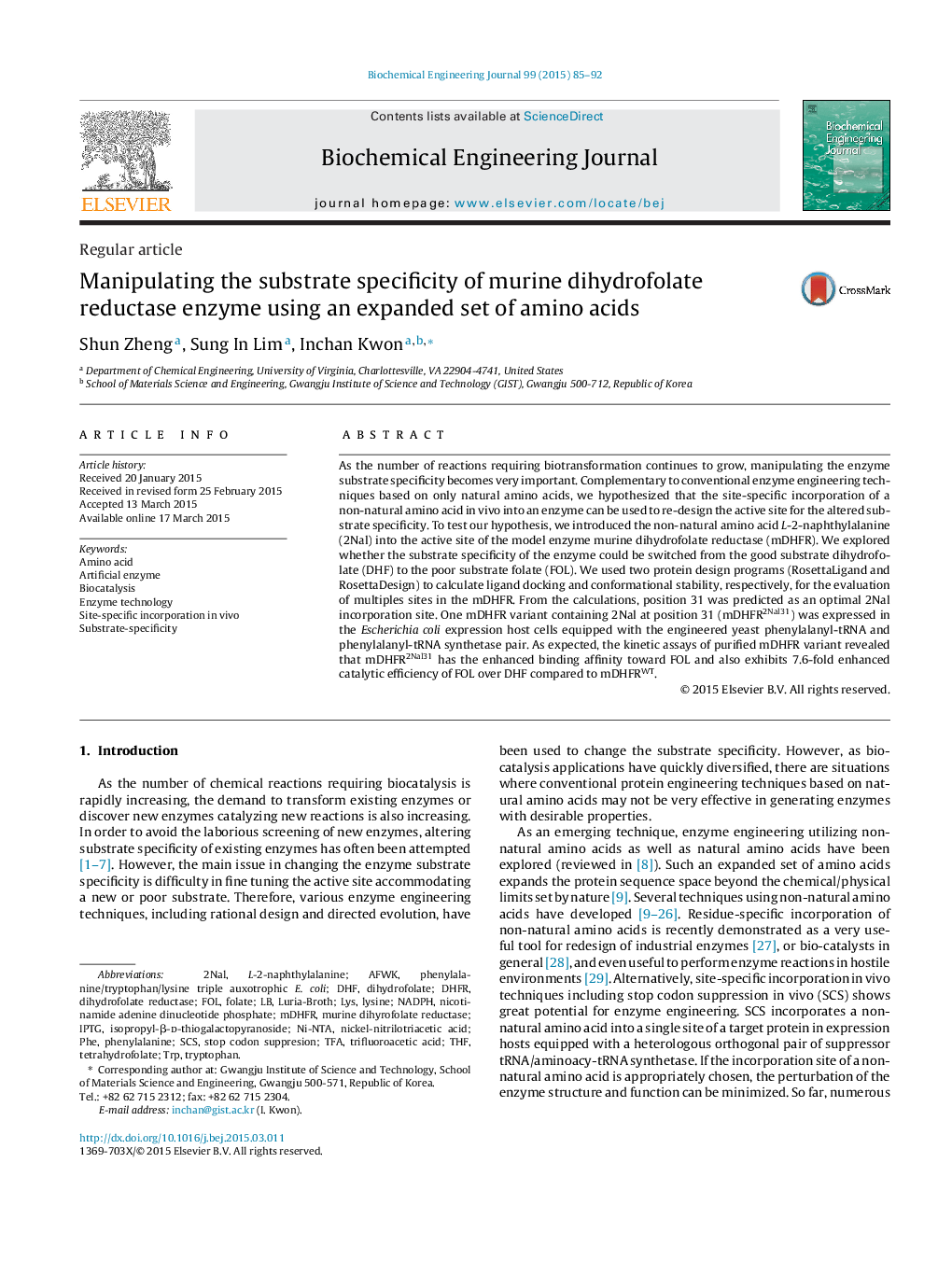| Article ID | Journal | Published Year | Pages | File Type |
|---|---|---|---|---|
| 2927 | Biochemical Engineering Journal | 2015 | 8 Pages |
•Stop codon suppression technique to change the substrate specificity of an enzyme.•Use of Rosetta programs to identify a site for stop codon suppression.•Mutation of Phe31 to 2Nal leading to the altered substrate specificity of mDHFR.
As the number of reactions requiring biotransformation continues to grow, manipulating the enzyme substrate specificity becomes very important. Complementary to conventional enzyme engineering techniques based on only natural amino acids, we hypothesized that the site-specific incorporation of a non-natural amino acid in vivo into an enzyme can be used to re-design the active site for the altered substrate specificity. To test our hypothesis, we introduced the non-natural amino acid L-2-naphthylalanine (2Nal) into the active site of the model enzyme murine dihydrofolate reductase (mDHFR). We explored whether the substrate specificity of the enzyme could be switched from the good substrate dihydrofolate (DHF) to the poor substrate folate (FOL). We used two protein design programs (RosettaLigand and RosettaDesign) to calculate ligand docking and conformational stability, respectively, for the evaluation of multiples sites in the mDHFR. From the calculations, position 31 was predicted as an optimal 2Nal incorporation site. One mDHFR variant containing 2Nal at position 31 (mDHFR2Nal31) was expressed in the Escherichia coli expression host cells equipped with the engineered yeast phenylalanyl-tRNA and phenylalanyl-tRNA synthetase pair. As expected, the kinetic assays of purified mDHFR variant revealed that mDHFR2Nal31 has the enhanced binding affinity toward FOL and also exhibits 7.6-fold enhanced catalytic efficiency of FOL over DHF compared to mDHFRWT.
